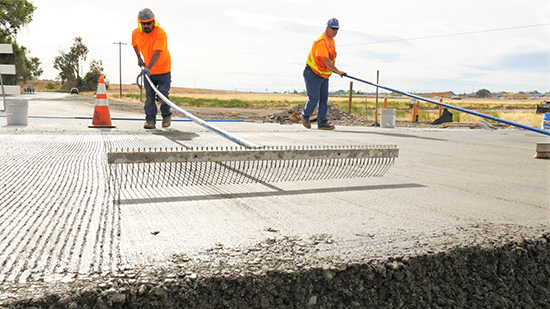|
Subscribe / Renew |
|
|
Contact Us |
|
| ► Subscribe to our Free Weekly Newsletter | |
| home | Welcome, sign in or click here to subscribe. | login |
Construction
| |
 |
September 28, 2018
Infrastructure (Transportation)

Second Avenue reconstruction project
Location: Burbank, Walla Walla County
Owner/developer: Walla Walla County Public Works
Team: Wm. Winkler Co., general and concrete contractor; American Rock Products and Wm. Winkler Co., ready-mix suppliers
The Second Avenue project is the first compacted concrete pavement (CCP) prototype arterial construction in the United States.
While roller-compacted concrete has been utilized since the 1970s it has predominantly been utilized for log yards and spillway structures, but unable to serve our roadway infrastructure.
CCP is a next-generation application of this process that will allow for economical road construction and offer an extended life cycle similar to traditional concrete pavements. It utilizes proprietary additives in the project mix design, coupled with a proprietary surface enhancement.
The Second Avenue project required a total reconstruction of the failed asphalt pavement on the primary arterial into the Port of Walla Walla.
Existing asphalt and base material was pulverized and recycled utilizing cement treated base.
Concrete curb and gutter was constructed, followed by construction of the CCP. An on-site pug mill was erected for CCP to be constructed, and a high-density asphalt paver was used for placement, grading and compaction.
Unlike any other exterior pavement, the surface of the pavement was troweled with Whiteman hydrostatic riding trowels (typical of interior slabs) during application of the ACEiT Blue surface treatment. This allowed zero-slump materials to create a dense paste for final finishing immediately after troweling.
The surface is extremely dense and impermeable to water, ice and other environmental attacks. Upon applying the final tine finish, the surface was cured in a typical pavement procedure. Due to extremely low shrinkage, saw-cutting was not required, nor were dowels and load transfer devices required. To mirror a concrete pavement finish, saw-cuts were installed but not necessary.
This is the first project to enhance roller-compacted concrete basic products and provide for a structurally sound roadway that has the same finish and surface characteristics of traditional concrete pavement.
ACEiT Blue additives and surface application allow for final finishing (tine) of the pavement surface. Freeze-thaw resistance and surface durability mirror the performance of traditional concrete while also offering reduction in first cost.
Ultimately this process will be cost competitive with comparable asphalt and concrete sections while overcoming potholes, surface rutting and associated maintenance and life-cycle costs.
The 32-by-450-foot roadway was placed and finished in one day. The product achieved 98 percent density and strengths of 5,700 pounds per square inch in two days. Completed on Friday afternoon, the roadway was opened to heavy truck traffic on Monday morning.
Other Stories:
- Grand Award
Low-rise structures (nonresidential) - Tilt-up structures
- High-rise structures
- Infrastructure (non-transportation)
- Sustainable and resilient
- Architectural and artistic (residential)
- Architectural and artistic (nonresidential)


